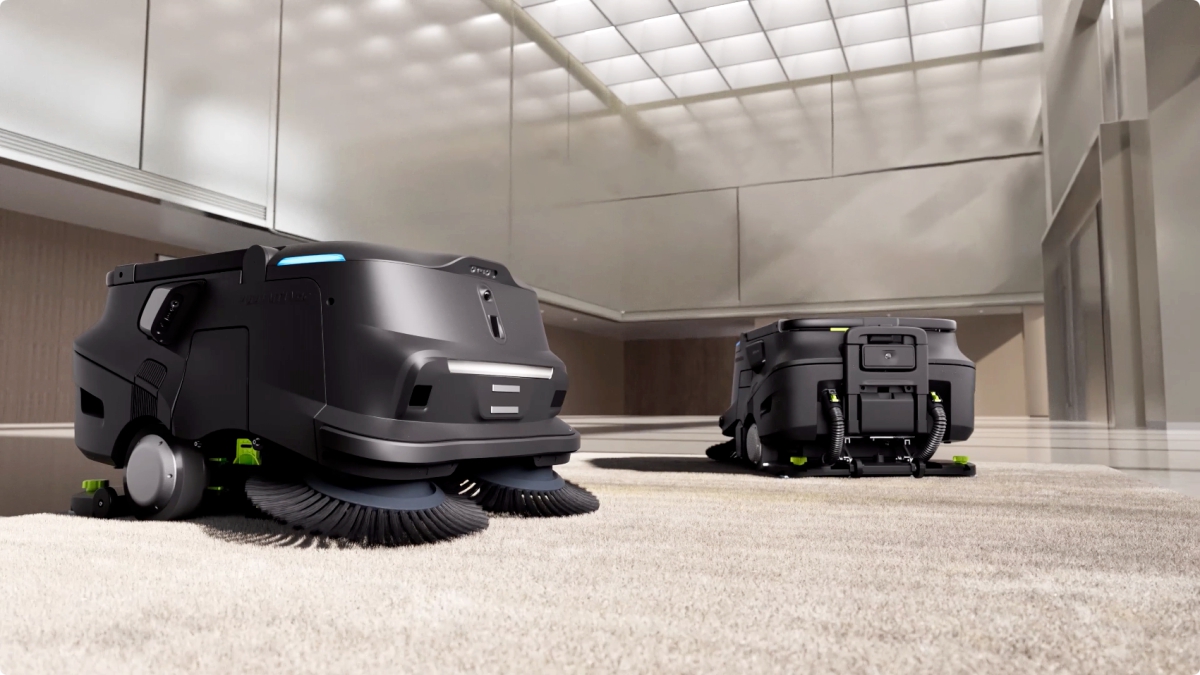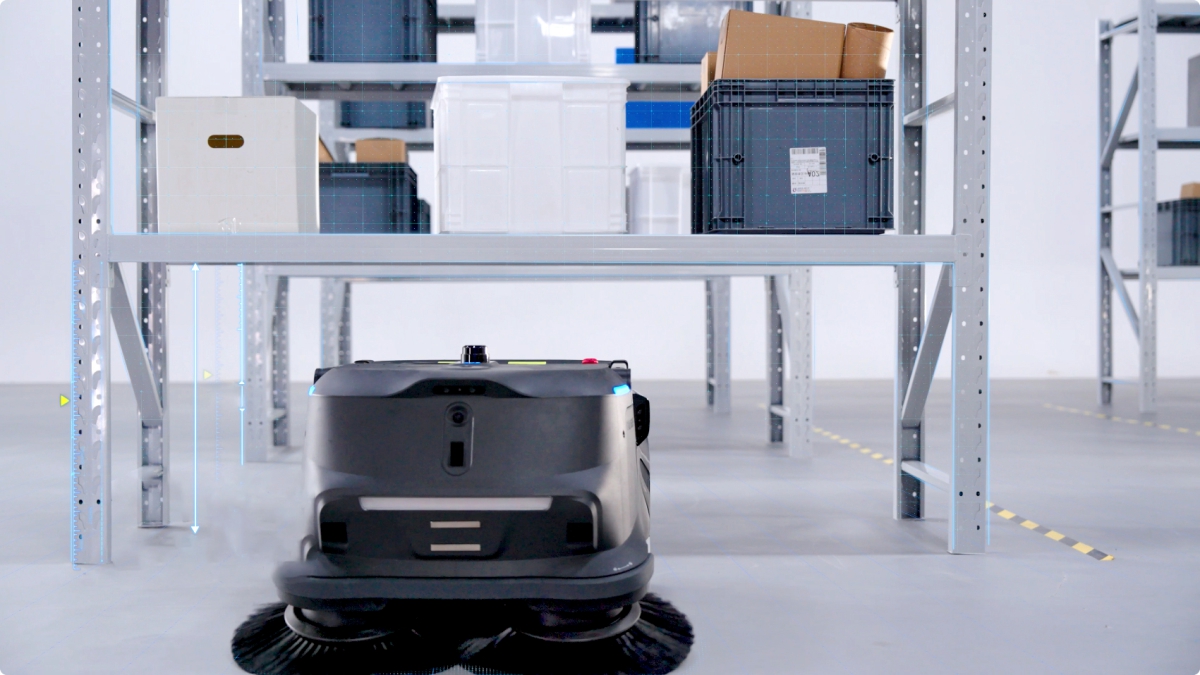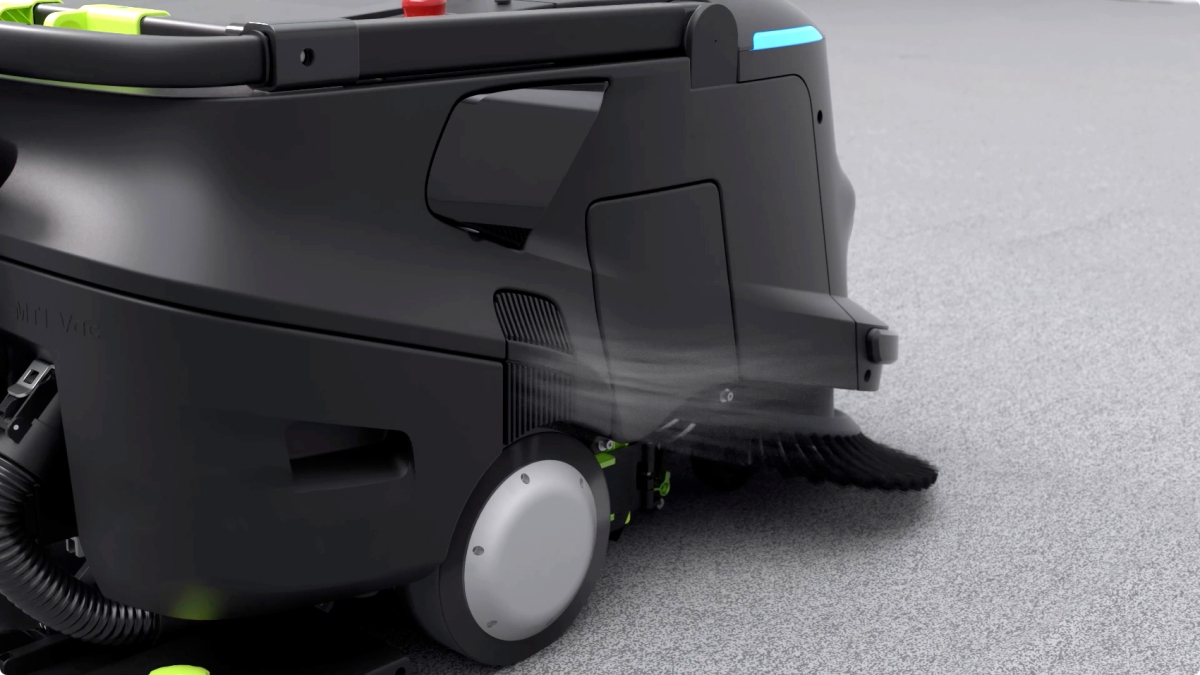In recent years, the global cleaning market is showing a highly intelligent development trend, and the market prospects of cleaning robots are huge. According to relevant statistics, the global intelligent cleaning robot market is expected to reach US$21 billion by 2030, with broad market prospects. Among them, large-area places such as airports, hotels, shopping malls, office buildings, and factory workshops are the key high-frequency use scenarios of cleaning robots. AI sweeping, vacuuming and pushing robots accurately focus on market demand, providing a new solution for large-capacity, high-intensity, and intelligent dry cleaning, pushing vacuum cleaning equipment into a new era of AI+.
AI sweeping, sucking and pushing robots are designed for vacuuming, focusing on the needs of efficient and deep dry cleaning, bringing users the core capabilities of powerful vacuuming, and effectively solving various pain points of customers in cleaning scenarios. With the emergence of AI sweeping, sucking and pushing robots, the vacuuming cleaning robot market will usher in innovative development and major changes.
In-wheel motor: the technical key to solving the pain points of cleaning robots
The wheel hub motor embeds the power, transmission and brake devices directly into the wheel hub, subverting the traditional complex structure of “mechanical gear train + reducer + external motor”. This design brings multiple breakthrough advantages to the AI sweeping, suction and pushing robot:
Simplified structure and space release: The number of components is reduced by more than 50%. The traditional solution requires the combination of 4 independent components, while the hub motor only needs “motor + driver” to achieve the function.
Improved performance: stable operation at low speed (as low as 1rpm), splash-proof design for wet floors, and noise reduction significantly improve the indoor experience.
Intelligent control foundation: Supporting millisecond-level response and precise differential steering, the robot can achieve millimeter-level mapping positioning and smooth obstacle avoidance, providing reliable execution layer support for AI algorithms.
Flexibility: The design of the wheel motor makes the robot more flexible in movement, able to easily cope with various terrains and obstacles. This is especially important for complex cleaning tasks in factory workshops and commercial environments.
Low noise: Compared with traditional motors, hub motors produce less noise during operation, and can complete cleaning tasks without disturbing others, improving the user experience.
Future Outlook
With the continuous advancement of AI technology and the continuous growth of market demand, the application prospects of AI sweeping, sucking and pushing robots and their core components, the robot hub motors, are broad. In the future, with the popularization of smart homes and smart factories, AI sweeping, sucking and pushing robots will not only be limited to cleaning functions, but may also be linked with other smart devices to achieve more complex cleaning management.
In short, the application of robot hub motors in AI sweeping, vacuuming and pushing robots not only improves cleaning efficiency, but also promotes the rapid development of the vacuum cleaning robot market. With the continuous advancement of technology and the increase in market demand, this field will usher in more innovations and opportunities in the future. For enterprises, seizing this trend will be the key to winning market competition.
About Zhongling Technology
Shenzhen Zhongling Technology has been focusing on robot wheel hub motors for many years. It is a high-tech company integrating R&D, production and sales. Customers customize different wheel hub motor tires for different robots to meet the working requirements of different robots. Over the years, adhering to the concept of focus, innovation, morality and pragmatism, it has contributed to the development of the robot industry.
Post time: Jul-29-2025





